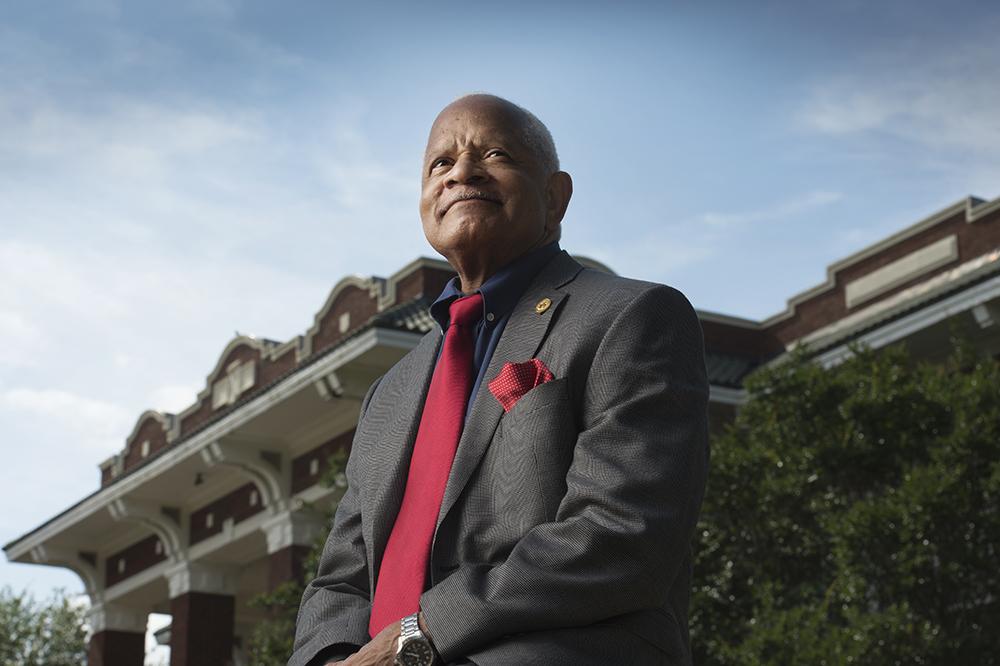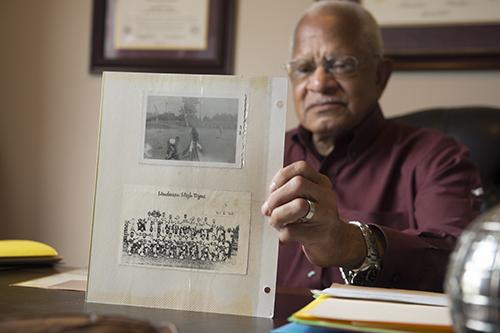
Contact: Mary Pollitz
STARKVILLE, Miss.—Saturday [July 19] marks a pivotal moment in Mississippi State history—the 60th anniversary of Dr. Richard E. Holmes becoming the university’s first African American student.

On July 19, 1965, Holmes stepped onto campus and rather than being met with animosity and hate, his acceptance was relatively peaceful and calm.
“There were no catcalls, no racial slurs,” recalled Holmes during the 40th celebration of his enrollment. “It was quiet and serene. Nothing happened; there was just curiosity and disbelief.”

During a 2015 university interview, Holmes recalled the impact of his enrollment, “Mississippi State University would never be the same. For the first time in history, Mississippi State’s face would reflect the face of the nation. Let me make this crystal clear: I came into Mississippi State because it is my home, and Richard E. Holmes loves Mississippi State University. I will always be a loyal Bulldog fan.”
“The abiding legacy of Dr. Richard Holmes at our university is that of integrity, hard work, mutual respect and a sense of purpose,” said MSU President Mark E. Keenum. “I am so proud to call him my friend and to reflect on his sacrifices and accomplishments.”
University students recently wrote letters to Holmes, thanking him for his pioneering role in the 1960s and reflecting on the impact his legacy continues to have on campus today.
(Video by Sarah Kirk)
His journey was a key component in the Civil Rights Movement’s push for integration. He earned two degrees from MSU—a liberal arts degree and master’s degree in microbiology. In 1977, he graduated from medical school at Michigan State University.
Moving back to the South, Holmes served as an emergency room doctor for more than 20 years in Birmingham, Alabama, and later joined MSU as a staff physician at the campus's Longest Student Health Center in 2003. Now retired, Holmes resides in Columbus with his wife Judie Granderson.
The university honored Holmes in 1991 with the establishment of the Richard E. Holmes Cultural Diversity Center, now known as the Holmes Center for Student Success.
Holmes was admitted to MSU three years after James Meredith’s forced entry to the University of Mississippi. Meredith’s enrollment was backed by federal troops and triggered deadly rioting in 1962. Holmes’ acceptance also came one year after the “long hot summer” of 1964, when three young civil rights workers were murdered in Neshoba County. His enrollment, acceptance and academic journey with MSU marked a historic day for the university and the Magnolia State.
Holmes’ storied relationship and love for MSU didn’t begin in 1965. Rather, it was in 1957 when he was 13 years old. He stood on the corner of Main Street and Washington Street in Starkville and watched the MSU homecoming celebration parade through the streets of his hometown.
“As I witnessed the pomp and ceremony of the parade, I heard the exuberance of the crowd and the melody and lyrics of the Mississippi State fight song,” he recalled during a university speech in 2005. “At that moment, destiny was set in motion. I did not know when. I did not know how, but I knew at that very moment that I someday would be a Mississippi State Bulldog.”
Visit this link for a slideshow of photos featuring Dr. Richard Holmes throughout the years.
Mississippi State University is taking care of what matters. Learn more at www.msstate.edu.
